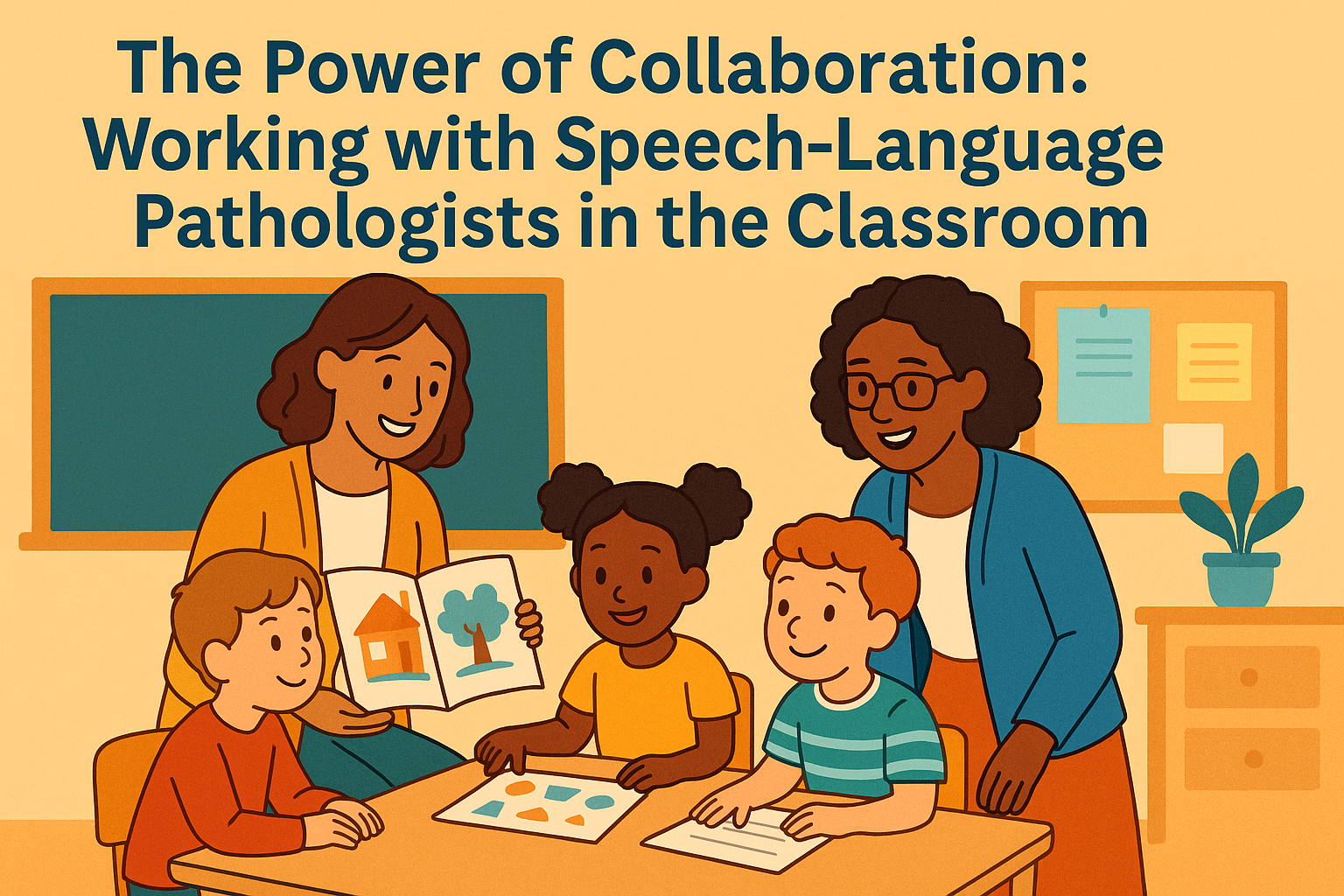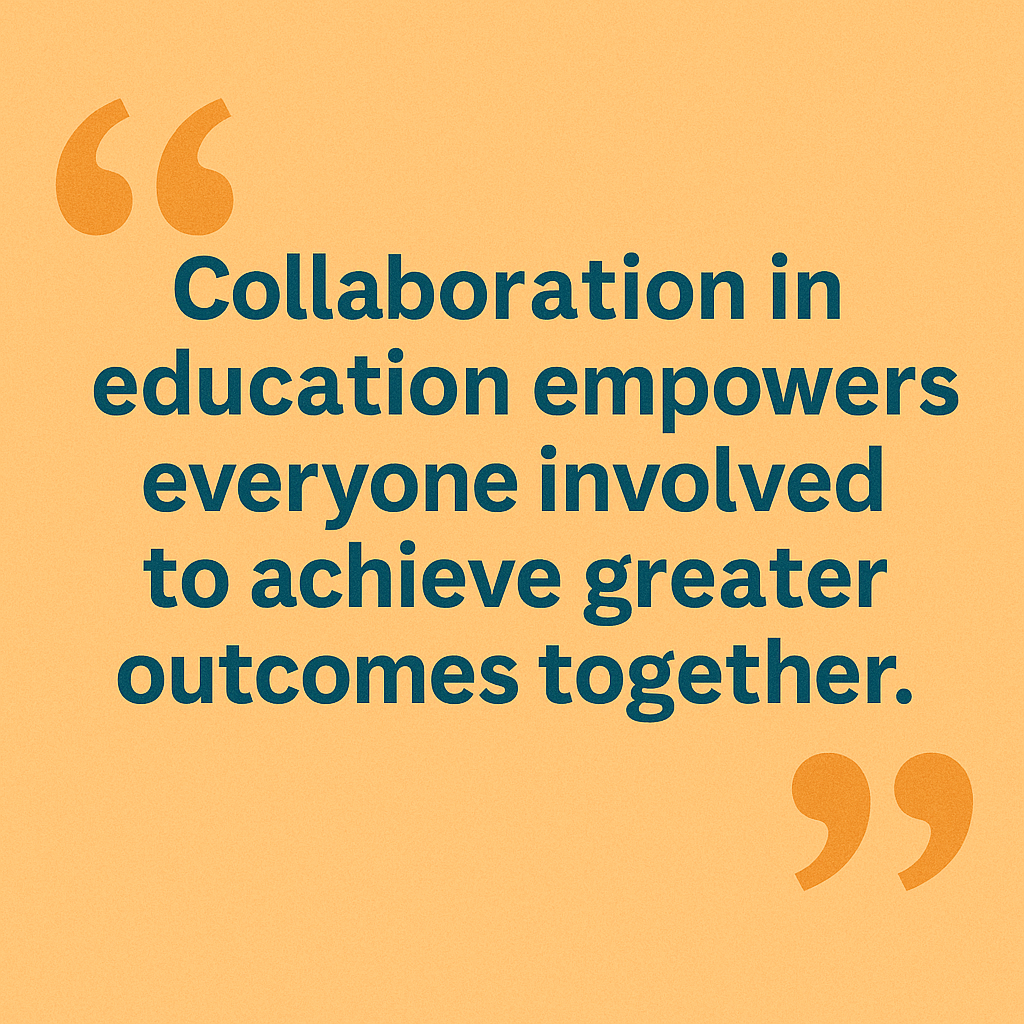The Power of Collaboration:
Working with Speech-Language Pathologists in the Classroom
In today’s inclusive classrooms, collaboration among professionals is more important than ever. One of the most valuable partnerships a teacher can build is with a Speech-Language Pathologist (SLP). SLPs bring specialized knowledge in communication development that can support not only students with speech and language challenges, but also enhance learning for all students.
When educators and SLPs work together, the impact is powerful.
When we work together, we create inclusive, supportive, and communication-rich classrooms where every student has the opportunity to thrive.
What Does an SLP Do in a School Setting?
SLPs are experts in communication. In schools, they assess and support students with difficulties in areas like:
Speech sound production
Language comprehension and expression
Social communication (pragmatics)
Fluency (e.g., stuttering)
Voice and resonance
But beyond direct therapy, SLPs also consult with teachers, support classroom strategies, and contribute to student success across the curriculum. For more information about the disabilities above, check out our post from a few weeks ago! Visit our Services page to see how we work with others and students through therapy.
Why Collaboration Matters
When SLPs and teachers team up, they can:
Identify Needs Early: Teachers may notice a student struggling to follow directions or express themselves. Partnering with an SLP ensures timely observation and support.
Support IEP Goals in the Classroom: SLPs can help teachers integrate therapy goals into daily activities, making interventions more meaningful and consistent.
Enhance Classroom Communication: SLPs can recommend visual supports, language-rich routines, or modifications that benefit all learners.
Strengthen Social Skills Instruction: SLPs often lead or co-lead social skills groups and can model strategies for promoting peer interaction in the classroom.
Provide Professional Development: Teachers gain tools and techniques that improve instruction and classroom communication.
Collaboration in education empowers everyone involved to achieve greater outcomes together.
What Collaboration Can Look Like
Effective collaboration doesn’t always mean co-teaching (though it can!).
Here are a few flexible models:
Push-In Support: The SLP works directly in the classroom, supporting a student during a lesson or activity.
Consultation: The SLP meets regularly with the teacher to review student progress and adjust strategies.
Co-Planning: SLPs and teachers plan activities that target both academic and language goals.
Modeling and Coaching: The SLP demonstrates language facilitation techniques, and the teacher applies them during instruction.
Tips for Successful Collaboration
Communicate Regularly: Schedule time to touch base, even briefly. Email updates or shared documents can be helpful.
Set Shared Goals: Align IEP goals with classroom objectives for a more unified approach.
Be Flexible: Schedules can be tight, but even small moments of collaboration can make a big difference.
Value Each Other’s Expertise: Teachers know their students best; SLPs bring a deep understanding of language development. Together, you can meet students where they are and help them grow.
Final Thoughts
Collaboration between teachers and SLPs is not just a bonus—it’s a best practice. When we work together, we create inclusive, supportive, and communication-rich classrooms where every student has the opportunity to thrive. Connect with us to see how a partnership with us could benefit your organization!
Bonus Download: Tip Sheet for Teachers
Follow us on socials and tell us how you’ve used these tips!


